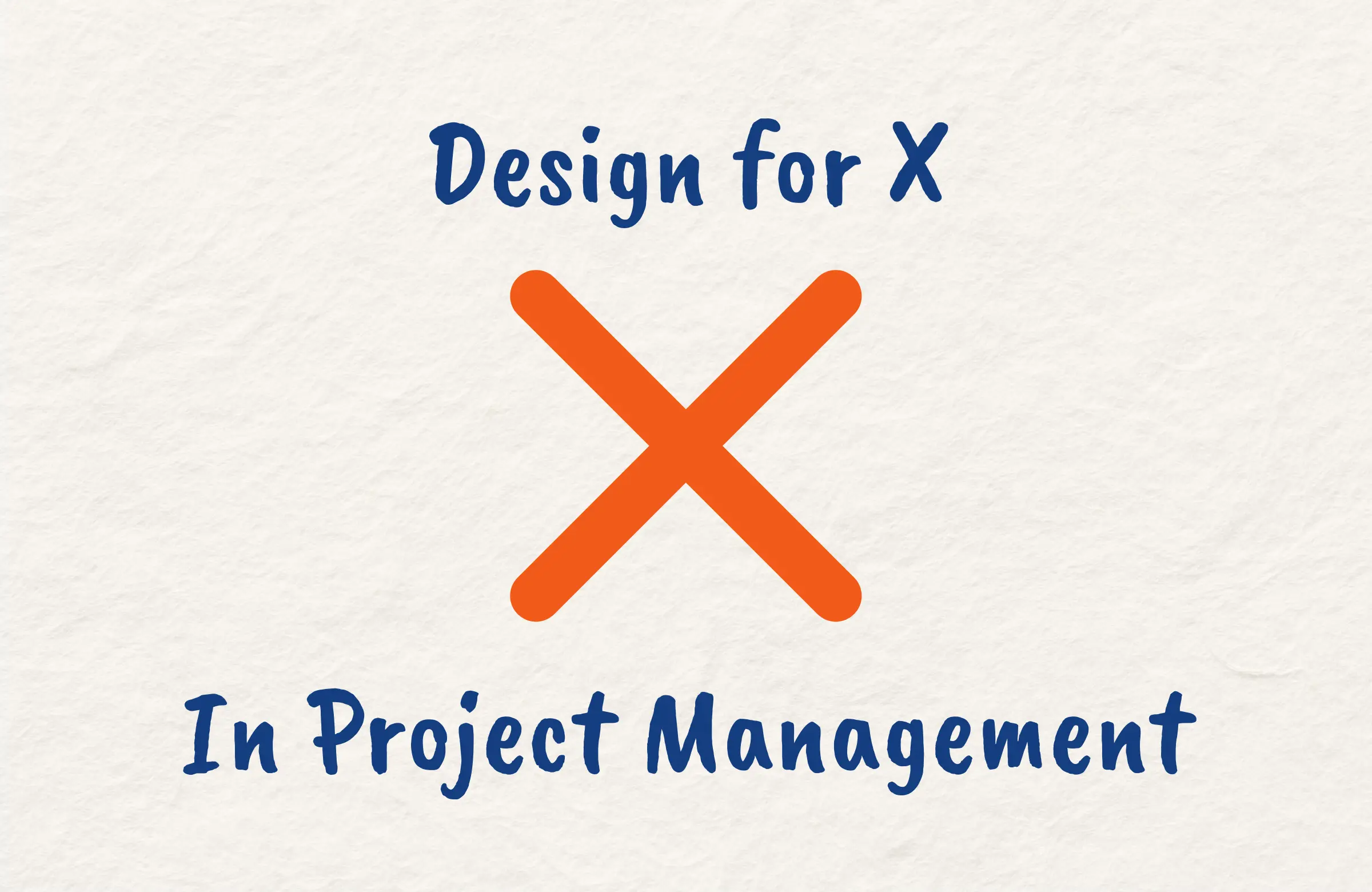Design for X (DfX) also called Design for Excellence is an important project management methodology focused on optimizing the product design process.
By incorporating best practices like Design for Manufacturing (DfM) and Design for Quality (DfQ) into the initial design phase, DfX allows you to maximize quality while minimizing costs.
In this post, we’ll explore the definition and key concepts behind DfX. You’ll learn how it differs from traditional engineering and understand examples like DfM and DfA. We’ll also cover the major benefits of DfX and tips for PMP exam questions that you may encounter if you are a candidate.
Whether you’re a project manager looking to boost efficiencies or a PMP candidate prepping for the exam, this primer on Design For X will give you the knowledge you need.
What is Design for X (DfX) in Project Management?
The PMBOK Guide 6th Edition defines DfX as “A set of technical guidelines that may be applied during the design of a product for the optimization of a specific aspect of the design.”
Design for X (DfX) or Design for Excellence refers to a set of methodologies focused on optimizing the process of product design for a specific objective, which is represented by “X”. The “X” can stand for qualities like manufacturability, reliability, quality, or cost-effectiveness.
DfX takes a systematic, comprehensive approach to product design right from conception through completion. It leverages industry best practices and standards to ensure the design and manufacturing processes are free of errors and defects.
In project management, DfX principles help optimize product design by keeping key end goals in mind right from the start. It allows project teams to reduce costs, accelerate timelines, improve quality, and increase customer satisfaction.
DfX brings cross-functional team members like manufacturing, procurement, and customers into the design process early on. This collaboration and alignment ensures the final product meets objectives across the board.
DfX vs Traditional Engineering
While DfX and traditional engineering design share some commonalities, there are some distinctions that you need to understand as a project manager to enable you evaluate the best design approach for your product development projects.
Some of the key differences between DfX and traditional engineering include:
Defect Detection
In traditional engineering, errors are often detected and fixed after the design is completed, which can be costly. DfX on the other hand proactively shifts the focus to defect prevention upfront in the design phase.
Tools Used
Traditional engineering uses a wide array of tools, whereas DfX relies on a select standard toolkit for enhanced consistency and performance.
Design Iterations
Traditional design often requires multiple back-and-forth iterations to get the product right, adding time and cost. DfX aims to optimize the design earlier on, avoiding iterations.
Design requirements
Traditional engineering focuses heavily on functional requirements, while DfX takes a broader view, encompassing full product lifecycle requirements.
Team Input
Traditional design tends to be less cross-functional. DfX actively brings in more stakeholders like manufacturing partners earlier for a team-based approach.
Design For X Examples
Let’s look at some common examples of Design for X methodologies:
Design for Manufacturing (DfM)
DDfM focuses on optimizing the design for ease of manufacturability. Its principles are applied to simplify and streamline the manufacturing processes and material choices. This leads to reduced production costs and faster time to market.
Design for Assembly (DfA)
DfA concentrates on optimizing the product design for easier assembly. Simpler, more intuitive assembly is enabled through basic components, reduced part counts, and clear assembly instructions, which delivers benefits like lower assembly costs, fewer defects, and improved quality.
Design for Manufacturing and Assembly (DfMA)
DfMA combines both DfM and DfA principles and takes a holistic view to optimize for manufacturability and simplicity of assembly. It provides a 40% reduction in assembly time on average.
Design for Quality (DfQ)
DfQ builds quality guidelines and checks into the design phase, not just manufacturing which prevents quality issues from cropping up late in production. DfQ establishes design rules to ensure form, fit, function, durability, and other quality needs are fulfilled.
Design for Testing (DfT)
DfT incorporates testing processes like design for inspectability and design for diagnostics into the initial product design. This ensures ease of testing later on, reducing test costs and time.
DfX methodologies like these allow project teams to optimize the product design for multiple objectives right from the start. Rather than a narrow focus on functionality, DfX takes a wider, more strategic view for excellence across the board.
Benefits of Design for X (DfX) in Project Management
Applying Design for X principles in project management can yield significant benefits including:
- Improved Quality: By incorporating quality guidelines upfront, DfX prevents defects and maximizes product performance.
- Reduced Costs: Simpler design and manufacturing processes enabled by DfX lower production costs.
- Faster Time to Market: With fewer errors and rework iterations, DfX accelerates product launch timelines.
- Increased Customer Satisfaction: Optimizing for critical factors like usability and durability leads to happier customers.
Additional gains include better manufacturability, simplified testing, improved regulatory compliance, and more.
Design For X PMP Exam Tips
Design for X (DfX) is one of the tools used in the “Manage Quality” process according to the PMBOK Guide 6th Edition.
Here are some tips for tackling Design for X questions on the PMP exam:
- Know the standard definition of DfX – “a set of guidelines applied in design to optimize a specific aspect.”
- Understand the core concepts like optimizing for manufacturability, assembly, quality, cost, testing, etc.
- Review examples like DfM, DfA, and DfQ and how they drive project improvements.
- Study the PMBOK section on Quality Management processes, where DfX is highlighted.
- Recognize how DfX fits into the broader project lifecycle and how it compares to traditional engineering approaches.
- Don’t get overwhelmed by the various DfX methods – focus on the high-level themes and business benefits.
- Anticipate 1-2 exam questions covering the basics of DfX – what it is, how it works, and why it is useful.
- Answer questions from a project manager’s perspective, emphasizing how DfX principles can optimize product design and align to objectives.
With this understanding of the Design for X methodology, you’ll be well prepared to successfully tackle any related questions on the PMP exam.
Conclusion
Design for X (DfX) or Design for Excellence represents a strategic, goal-oriented approach to product design and development.
By optimizing for critical factors like manufacturability, quality, and cost from the outset, DfX methodologies like DfM and DfA enable you to manage projects more effectively.
Whether you are looking to boost efficiencies in your organization or prepping for the PMP certification exam, this primer has provided the core knowledge you need to master this concept.
Now it’s time to apply these methodologies to drive greater speed, quality, and cost performance in your next initiative.





